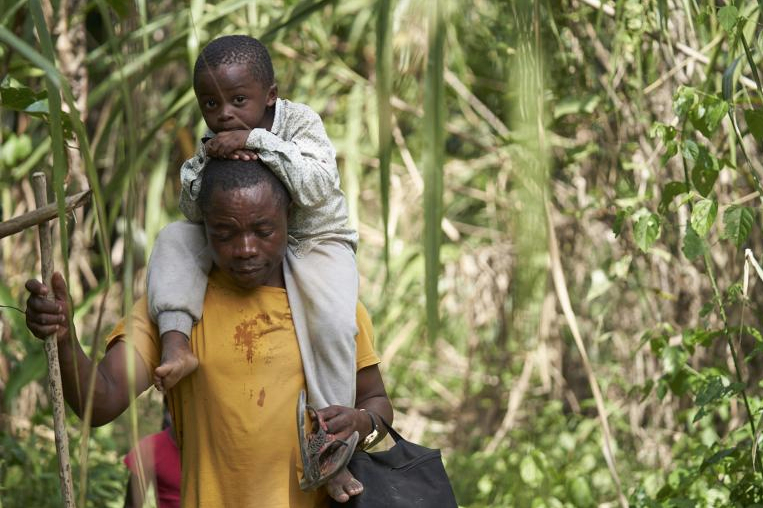Colombia is today a relevant place from in terms of migrations in the LATAM región. This is due to mainly two types of flows that take place in its territory: the Venezuelan migration and, the lesser known, “extra-continental” migration. Even though both migrations converge in the same territory, either as transit or destination, the truth is that the position of the Colombian authorities towards both migrations, as well as the measures adopted, are diametrically different.
Two migrations in Colombia
Colombia is today the country receiving most Venezuelan migrants, among other reasons, because both countries share an extensive and porous land border of more than 2,219 km. According to Migración Colombia, as of January 2021, there were around 1.8 million Venezuelans in the country.
But, on the other hand, Colombia is a transit country for the “other migration”, known as “extra-continental”, made up of people coming from Caribbean countries -mainly Haiti and Cuba, from Africa and Asia. To cross into Panama on their way to North America, migrants must cross the Darien Plug, the swampy jungle area located on the border of Central and South America that has historically functioned as a natural barrier between the two subcontinents.
This isolated and inhospitable area is also extremely dangerous due to the presence of drug trafficking and other criminal organizations. However, some 650 people cross through this area daily, according to the director of Migration Colombia, Juan Francisco Espinosa.
The “other migration”
Although the migration of people through the Darien Plug is not a recent occurrence, it is new I its dimension. In 2015, the International Organization for Migration (IOM) noted that “in the first decade of the 21st century, contemporary extra-continental migration from Africa and Asia to Latin America was a significant phenomenon.” Meanwhile, according to the Migration Policy Institute, the more than 5,000 Haitians who were recently expelled upon their arrival in the United States had been on a decade-long journey, and many had crossed the jungle-like Darien.
According to the League Against Silence, based on data from Migration Colombia, at the beginning of September 2021, the composition of this “other migration” is 74.6% Haitian, 7.01% Cuban, 1.5% from Senegal, Ghana, Angola and Guinea, and the remaining 16.8% of other nationalities. The migratory route is not only difficult because of the adverse conditions of the places they transit, such as the inhospitable Darien, and the precariousness in which they must do it, but also because of racial and language issues.
This migration looks new, even though it has been happening for decades, because little attention has been paid to it and no measures have been taken to address this phenomenon, beyond the agreement with Panama and other countries in the region to authorize transit. However, the marginality and almost total ignorance of this long-standing migratory phenomenon has been exposed with the Covid-19pandemic.
Border closures, and the Colombian-Panamanian border in particular, have led to prolonged delays in the movement of these people. The situation faced by the Colombian municipality of Necoclí, where thousands of people have been “stranded”, illustrates the lack of institutional response under the logic of a “transit vocation in which Colombia supposedly has no influence, according to Espinosa.
According to the director of Migration Colombia, this is “a migration that passes through Colombia, it does not originate in Colombia, nor does it have Colombia as its destination“. This would seem to indicate that Colombia is only one more step in the journey of these people and that, consequently, it is only necessary to ensure that migrants can continue their transit to Panama, since their interest is not to stay.
Venezuelan migration
Unlike extra-continental migration, Venezuelan migration into Colombia is notorious, not only in quantitative terms, but also in terms of the attention it has received from the authorities. The decisions taken in recent years have been aimed at responding to the arrival of Venezuelan nationals. Today, with the implementation of the Temporary Protection Statute for Venezuelan Migrants (ETPMV), the authorities recognize that this migration has a permanent vocation, despite the fact that for many years it was stubbornly insisted that this migration was temporary.
In any case, even if there was no consent to the permanence of migration from Venezuela, the truth is that the Colombian State has adopted measures aimed at responding to this population, so that the transitory or temporary nature of migration in no way indicates institutional inaction. This shows that official narratives -and political will- are tremendously relevant at the moment of defining policies. Having moved from an institutional posture of transitoriness to the vocation of permanence explains today’s adoption of the ETPMV that will allow thousands of Venezuelans to regularize their situation.
The effects of the distinction
This does not mean that the “other migration” should receive the same treatment. What is important is to call attention to how the discourse of the authorities, which is consolidating around one or the other migratory flow, is useful to excuse or justify the action or omission of the institutions in this area.
However, the transitory nature of migration leaves completely invisible the complexity and heterogeneity of migratory flows, as well as the particularities of migrants’ life projects. These are journeys that last months, even years, in which people are exposed to scenarios of exploitation, risk and violence, which aggravate their situation.
These people are not just “migrants” who travel with the desire to reach the United States. They are human beings with rights, just because they are people. The Colombian State, as well as the Colombian society, needs to think about the needs of these people in their passage, ephemeral or not, through Colombia.
In their journey, this population requires health care, lodging, access to food and livelihoods, protection and security, interpreter services, access to justice, regularization mechanisms, as well as international protection, if applicable. These people need to meet their basic needs and develop a life project in dignified conditions, especially considering the large number of children who have even been born along these routes and whose best interests must be guaranteed.
Finally, local governments, precarious and with limited capacity, are overwhelmed by the situation. For these authorities, who deal with this phenomenon daily, the expression “vocation of transitoriness” solves little or nothing and rather widens the gap that may exist between the territories and the National Government.
Autor
Lawyer, PhD. and associate professor at the Law School of the Universidad de los Andes (Bogotá), Colombia. Director of the Center for Migration Studies (CEM) and co-founder of the Legal Clinic for Migrants at the same university.











